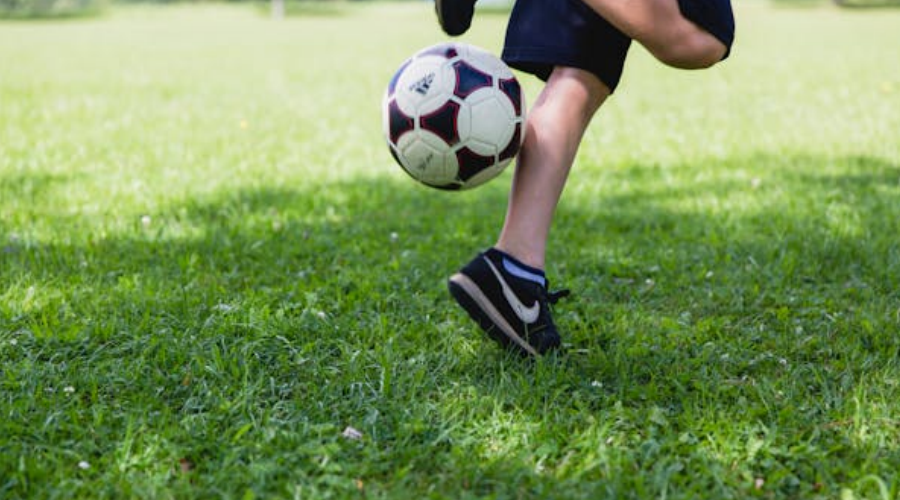It takes more than just consistent training to reach peak athletic performance. Whether you are a seasoned athlete or a fitness novice, getting the most out of your training regimen is essential to achieving your goals. It’s not just about training harder, but training smarter. Here’s a comprehensive guide to help you fine-tune your routine for top-level performance in 2024 and beyond.
1. Personalize Your Training Plan
Every athlete is unique, and a one-size-fits-all training plan is unlikely to deliver the best results. Personalization is key to optimizing performance.
How to Personalize Your Training:
- Assess Your Goals: Start by identifying your specific performance goals. Are you training for endurance, strength, speed, or agility? Each requires a different approach.
- Understand Your Body Type: Consider your body’s natural strengths and weaknesses. For instance, some athletes are naturally more explosive, while others excel in endurance events.
- Track Performance Metrics: Use tools like heart rate monitors, GPS watches, and fitness apps to gather data on your workouts. Regularly tracking key metrics such as heart rate, recovery times, and pace can help you adjust your plan for better results.
Pro Tip: Work with a professional trainer or coach who can help create a customized training program based on your fitness level, goals, and unique physiology.
2. Incorporate Strength Training
Strength training is essential for athletes in every discipline. It enhances muscle power, prevents injury, and improves overall athletic performance.
How to Incorporate Strength Training:
- Focus on Compound Movements: Prioritize exercises that target multiple muscle groups, such as squats, deadlifts, and bench presses. These moves build functional strength that translates into athletic performance.
- Use Progressive Overload: Gradually increase the weight, reps, or intensity of your exercises to continually challenge your muscles and stimulate growth.
- Train the Core: A strong core is the foundation for almost every athletic movement, from running to jumping. Incorporate planks, Russian twists, and leg raises into your routine.
Pro Tip: Schedule strength training sessions 2-3 times per week to complement your sport-specific training without overtraining.
3. Prioritize Recovery and Rest
Rest is just as important as the time you spend training. Without proper recovery, your muscles don’t have the chance to rebuild and grow stronger, which can lead to overtraining, injury, and burnout.
How to Maximize Recovery:
- Get Enough Sleep: Sleep is when your body repairs and grows stronger. Aim for 7-9 hours of quality sleep per night.
- Active Recovery: On rest days, opt for low-intensity activities like walking, swimming, or yoga to keep your body moving without putting stress on it.
- Use Recovery Tools: Foam rollers, massage guns, and compression gear can help speed up recovery by reducing muscle soreness and improving circulation.
Pro Tip: Incorporate stretching or mobility work after your workouts to enhance flexibility and prevent stiffness. A dynamic warm-up before training can also help prevent injury.
4. Dial in Your Nutrition
Proper nutrition fuels your workouts and supports recovery. To achieve peak performance, you need to ensure you’re getting the right nutrients at the right time.
How to Optimize Nutrition:
- Fuel Pre-Workout: About 30-60 minutes before training, consume a snack that includes easily digestible carbohydrates and a bit of protein. This will provide energy and prevent muscle breakdown.
- Post-Workout Recovery: Within 30 minutes of finishing your workout, eat a balanced meal or snack containing protein and carbohydrates to aid muscle recovery and replenish glycogen stores.
- Stay Hydrated: Dehydration can severely impair performance, so drink plenty of water throughout the day. During intense or long workouts, consider an electrolyte drink to replace lost minerals.
Pro Tip: Experiment with timing and portions of meals to see what works best for your body. Some athletes benefit from smaller, more frequent meals, while others prefer three larger meals a day.
5. Incorporate Cross-Training
Cross-training helps to improve overall fitness by challenging your body in different ways. It not only reduces the risk of overuse injuries but also enhances your athletic performance by working different muscle groups.
How to Add Cross-Training:
- Swimming: Swimming is a full-body workout that improves cardiovascular fitness without putting stress on your joints.
- Cycling: Whether outdoors or on a stationary bike, cycling is an excellent way to build lower-body endurance and strength.
- Yoga: Yoga improves flexibility, balance, and mental focus—all of which are essential for athletic success.
Pro Tip: Schedule one or two cross-training sessions per week to give your body a break from your primary sport while still building strength, endurance, and flexibility.
6. Focus on Mental Toughness
Athletic performance isn’t just physical—it’s mental too. Building mental toughness is crucial for pushing through tough workouts, staying focused during competitions, and overcoming setbacks.
How to Build Mental Toughness:
- Visualization Techniques: Before a competition or challenging workout, visualize yourself succeeding. Picture each movement, feel the energy, and mentally rehearse your victory.
- Set Small, Achievable Goals: Break your training into smaller milestones that you can achieve week by week. This will keep you motivated and focused on progress.
- Practice Mindfulness: Incorporate mindfulness or meditation into your routine to improve focus, reduce stress, and build resilience in high-pressure situations.
Pro Tip: Use a training journal to document your mental and physical progress. This not only keeps you accountable but also gives you insight into how your mindset impacts your performance.
7. Manage Training Load with Periodization
Periodization refers to varying your training intensity and focus over specific periods to avoid burnout and peak at the right time. This technique helps athletes prepare for competitions or key performance moments by balancing intense training with adequate recovery.
How to Implement Periodization:
- Base Phase: Focus on building endurance and general fitness. Training intensity is moderate, and the volume is higher.
- Build Phase: Increase intensity and add sport-specific training while maintaining endurance.
- Peak Phase: Prioritize intensity and technique with less volume, preparing for competition or your peak performance goal.
- Recovery Phase: Reduce the volume and intensity of training to allow your body to recover and prevent injury.
Pro Tip: If you’re unsure how to periodize your training, consider working with a sports performance coach to help design a plan that aligns with your goals and event schedule.
8. Use Technology to Enhance Your Training
With advances in fitness technology, optimizing your training has never been easier. From wearables that track your heart rate to apps that analyze your running form, technology can provide valuable insights to help you improve.
How to Leverage Technology:
- Wearables: Use fitness trackers or smartwatches to monitor your heart rate, calories burned, sleep quality, and even recovery status.
- Apps for Progress Tracking: Utilize training apps to log your workouts, analyze your progress, and make adjustments. Apps like MyFitnessPal, Strava, or Nike Training Club are popular choices.
- Data-Driven Adjustments: Use the data you collect to make informed decisions about your training intensity, rest days, and nutrition.
Pro Tip: Don’t rely solely on technology—listen to your body and combine tech-driven insights with intuition for the best results.
Final Thoughts: Achieving Peak Performance
Optimizing your training routine for peak athletic performance is about striking the right balance between hard work, rest, nutrition, and mental focus. Whether you’re preparing for a marathon, a powerlifting competition, or just aiming to reach your personal fitness goals, incorporating these strategies will set you up for success. Stay consistent, track your progress, and make adjustments as needed, and you’ll be well on your way to achieving your peak potential.





